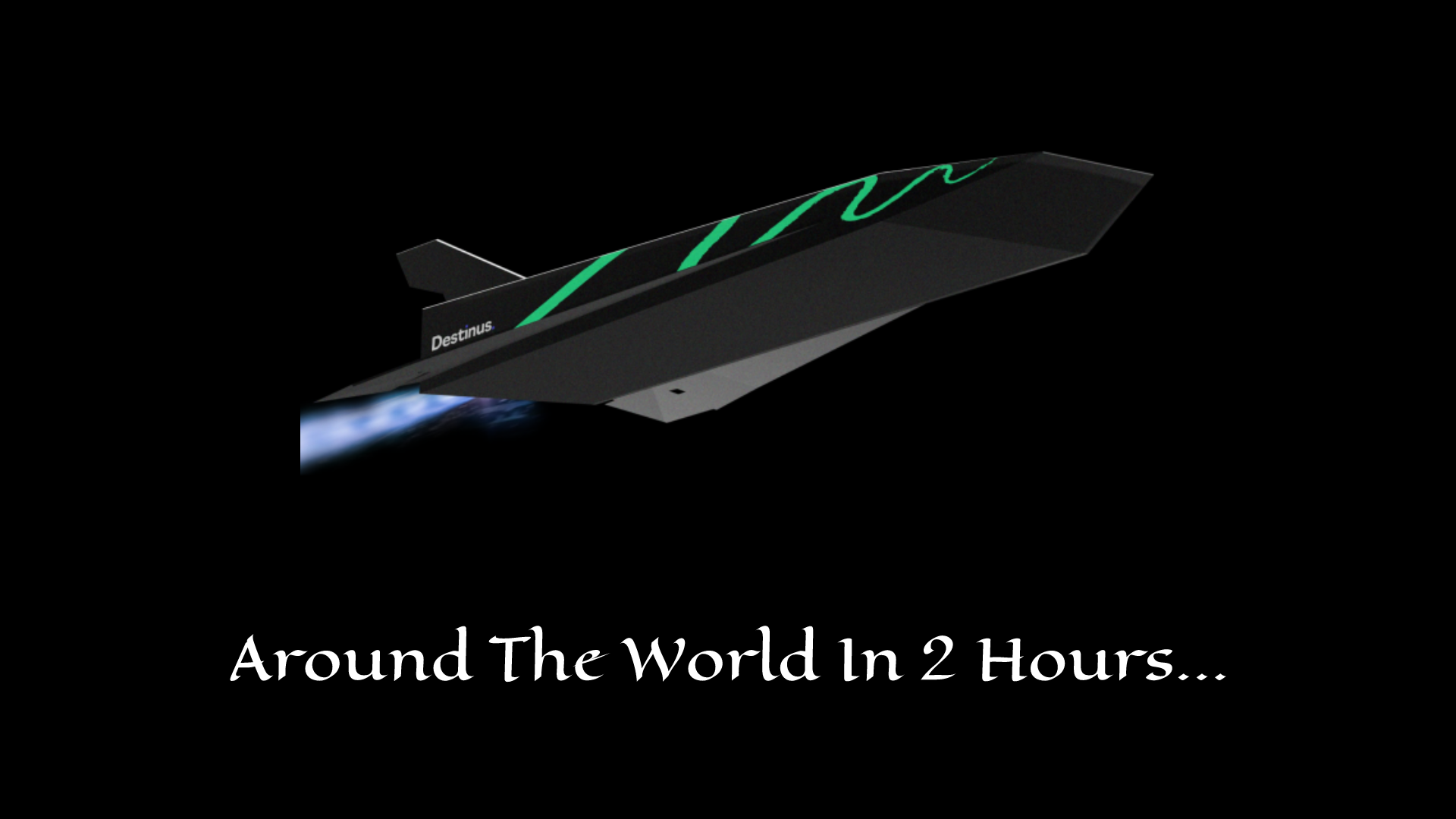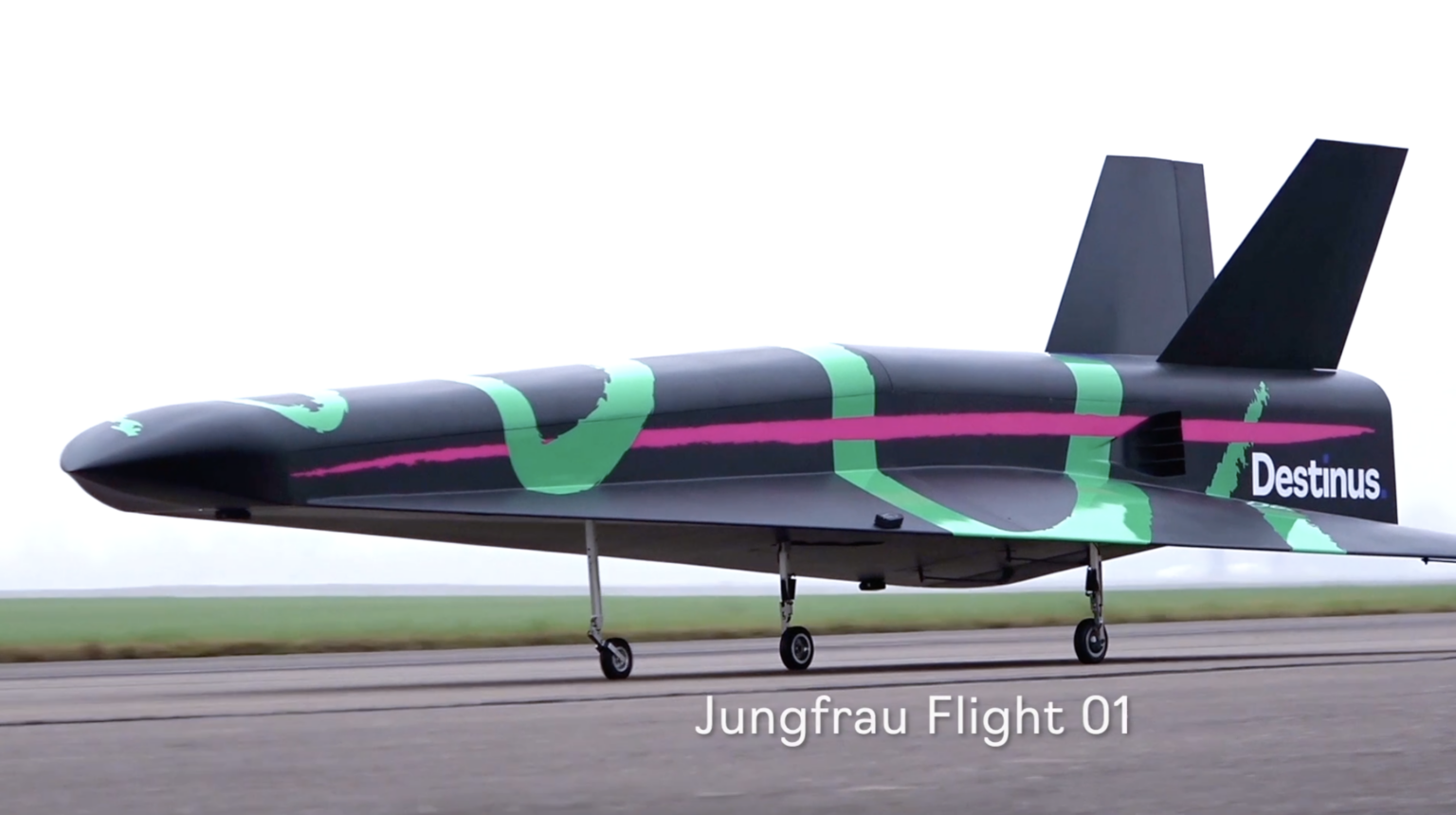Can space be the next medium of transport?

Transportation has played an important role in the development of human civilization ever since the wheel was invented. Today there are three common modes of transport, land, water, and air. What if we could explore another well-known medium for commercial transportation in the future? Or at least for transportation of goods soon? The space. Yes, with technological advancements, humanity could use space as the medium of transportation, and we are currently at the start of this development. The idea is simple. You depart from an airport, go to space, then cruise at hypersonic or supersonic speeds depending on the destination and land at the destination airport. Is this even possible? What are the challenges we will need to overcome? Let’s have a look.
State of the art
A Swiss start-up named Destinus is developing a liquid hydrogen-powered rocket plane capable of transporting goods around the world in two hours. The company plans to launch its first commercial plane in 2025 with an initial payload of one ton and a more advanced version with payloads of up to 100 tons by the year 2029.
A rocket plane is an integration of the principle of operation of both aircraft and a rocket. Destinus calls this concept ‘hyperplane’. The plane will initially take off horizontally like an airplane from an airport that has infrastructure for liquid hydrogen. At this phase, the plane will use its turbojet engines, like normal aircraft, and will be traveling at a velocity of Mach 0.8. The plane will keep on gaining altitude up to the cruising altitude of a Boeing 747(~11km max), and then the plane’s rocket engine will be ignited with will further take the plane to the mesosphere at hypersonic speeds of above Mach 10. The plane with cruise at this speed in the low gravity environment depending on the destination. As the destination comes closer the plane will exit the mesosphere enter the lower stratosphere and glide through the troposphere and land horizontally on the destination airport.

How is this possible?
Commercial aviation has already seen supersonic aircraft. The Concorde plane was operated by Air France and British Airways for over 27 years since 1976 and could travel at supersonic speeds of about 2,179 km/h. The plane was then retired in the year 2003 by both airlines because of the risk of increasing accidents and increased maintenance costs. These would also certainly be the problems of hypersonic aircraft, but the advancement of technology could provide solutions to all these problems.
Flying at supersonic speed means, flying faster than the speed of sound i.e., flying at a speed greater than 1236 km/h. The transition from supersonic to hypersonic takes place when the speed exceeds Mach 5 range i.e., five times the speed of sound. These high speeds can be attained practically by the use of rockets or air-breathing engines, such as ramjet or scramjet (Supersonic combustion Ramjet). The advantage of these air-breathing engines over rockets is that these engines have relatively higher fuel efficiency over long-range, but ramjet engines cannot start from rest as they need to be accelerated to supersonic speeds using rockets or turbojet engines. In the case of ‘hyperplane’, It uses a jet engine to horizontally take off from an airport and then ignite a rocket engine to boost this speed to the hypersonic range, and then maybe a hybrid scramjet engine would be used to cruise at hypersonic speeds. It’s would then be an airplane-rocket-missile technology. In order to handle the ionized air in the mesosphere, a scramjet engine will need a magnetohydrodynamic generator (MHD), which will slow down the air upstream of the engine. As of now, Destinus will use only a rocket engine and so the plane must also carry its oxidizer for combustion to take place.
Challenges
When this idea seems to be promising and crazy, there are also several challenges to make it practical:
Breaking the speed of sound- When an object travels faster than the speed of sound through the air, there is an explosion like thunder which produces an enormous amount of sound energy that exceeds 200 decibels. This is called the sonic boom. Any sound over 80 decibels can cause hearing loss in humans, and the sonic boom is so loud that, the enormous amount of energy released also cause physical damage, and the magnitude of this boom increases with the size of the object flying. A boom caused by a single supersonic fighter jet could displace more than 80 tonnes of rock. Destinus addresses this issue by accreting the hyperplane over the sea or unpopulated land and at higher altitudes so that this damage could be reduced. Apart from this NASA through its 'supersonic boom reduction program' is developing aircraft designs that alleviate sonic booms.
Thermal boundary- When flying at hypersonic speeds there is no boundary for speed but there is one for heat. A plane traveling through the air at hypersonic speed experiences very high friction that produces heat greater than 1080°C. This temperature is very high for any material on earth to handle. Destinus works on developing an ‘active cooling system solution’, that will use the heat from the friction to propel the rocket engine.
Mesosphere- The worst part of the earth’s atmosphere to fly an aircraft is the mesosphere. It is this part of the atmosphere that burns meteoroids and protects the earth’s surface from them. The air in this layer is so lite and dense which results in less lift and more drag for the airplane. The oxygen level is also very low and hence normal breathing is impossible. This would be of less issue if Destinus plans to completely auto-pilot its plane or use remote controls. Apart from this, the temperature in this layer is so low that water vapor in the air freezes and forms ice. The way Destinus plans to overcome this problem is not known until now.
Conclusion
The development of technology in the field of transportation plays a major role in upgrading human civilization. All the challenges mentioned above have their own technical solution. The development of sophisticated computer-aided design and simulation technology has made it possible for efficient optimization of aerodynamic design. The advancement in material technology would make aircraft lighter, durable, and more thermal resistant. Advanced titanium-nickel alloys could handle temperatures of up to 1080 °C, carbon, and ceramic-based composite materials could handle temperatures of up to 2000 °C. Though there are a lot of challenges in using space as the medium of transport we have come closer to attaining this goal. And in conclusion, if Destinus succeeds in flying over the mesosphere then there is no doubt that space will be our next medium of commercial transportation and we would travel around the world in minutes.
-Afrin Hewitt Alban.